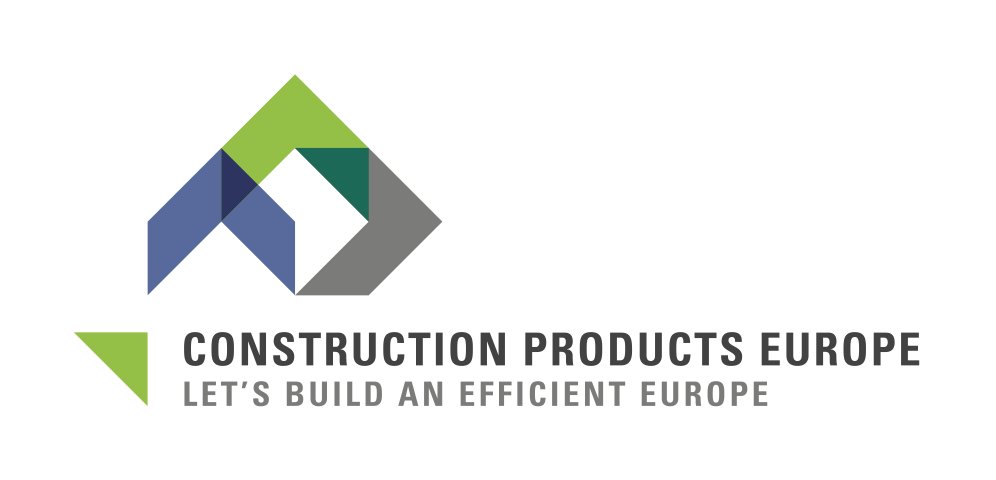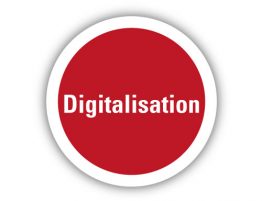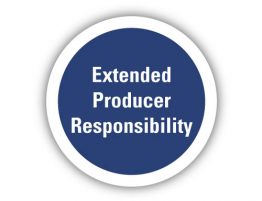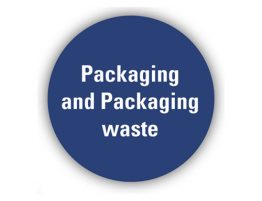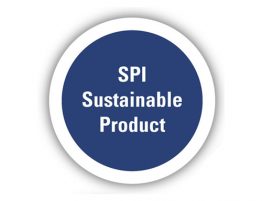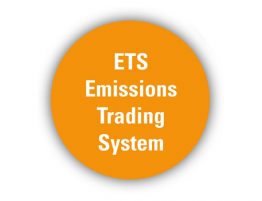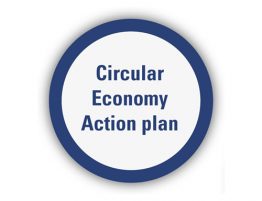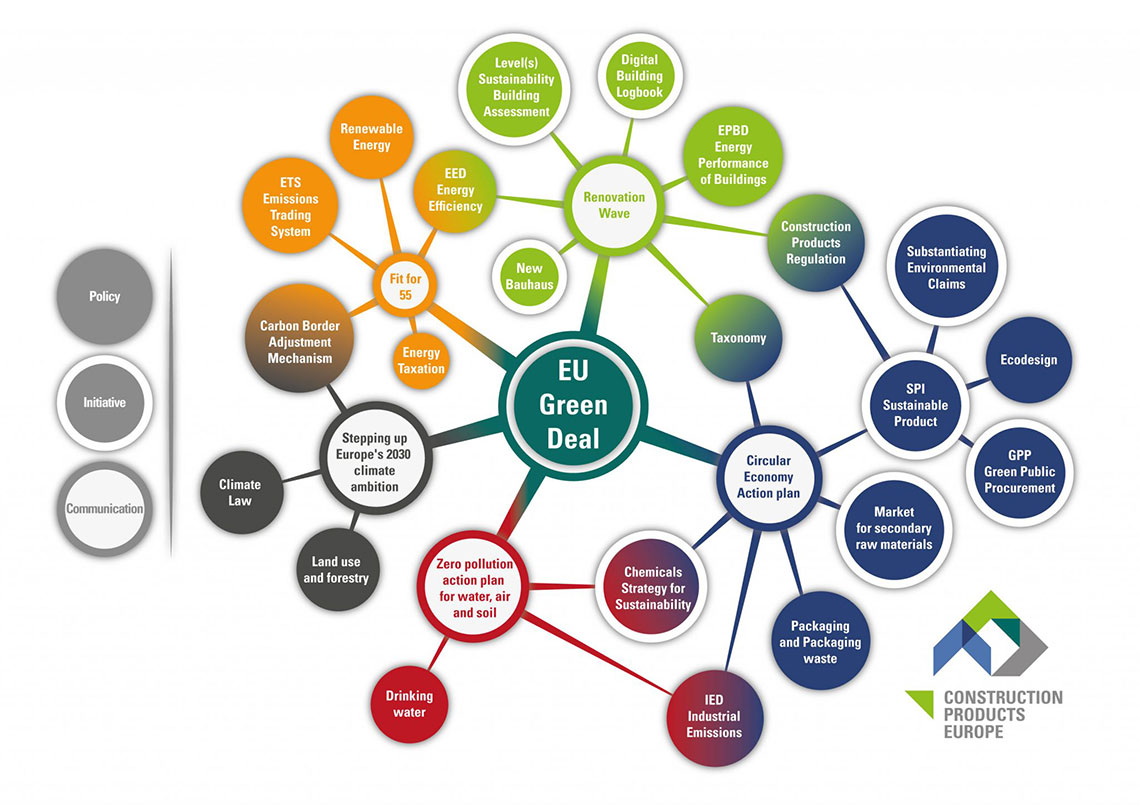
The European Green Deal COM (2019) 640 final
Extract of policies, initiatives and communications in the sphere
of the EU Green Deal related to construction
This communication of the European Commission describes the actions to achieve a transformation of the European society and economy to take place until 2030 and 2050. It is focused on climate change mitigation, but it also covers investment, growth, other harmful effects and related strategies such as adaptation to climate change, research, innovation and training.
The communication refers to construction as one of the main European industries and covers our products as part of the European industrial strategy and circular economy but also in the clauses related to construction (buildings and renovation). It includes references to a new Renovation wave, to the Construction Products Regulation (CPR), the Energy Performance of Buildings Directive (EPBD), a potential Building Emission Trade System (Building ETS) and describes the need for digitalisation as key enabler for change.
Construction is ready to be a key sector to achieve the EU Green Deal
goals, but a coordinated and efficient overarching strategy in needed
The core of the Green Deal is the objective to achieve climate neutrality by 2050 through a plan delivering results from 2030. In the construction field, environmental impacts are targeted paying special attention to the use phase and integrating manufacturing of products and construction activities in the more general industrial strategy.

EUCALC estimation for the pathway focused on buildings
The initiative also addresses other side effects of this ambitious targets and stresses the need to protect the environment and human health together with stable economic growth and societal equity.
Metrics is one of the most relevant topics as regards climate neutrality. Regulatory provisions and incentives must be based on a scientific accepted assessment methodology. Our industry trusts on Life Cycle Assessment and Environmental Product Declarations as the best instrument to deliver sustainability information and the Construction Products Regulation (CPR) proved to be the most adequate regulatory tool to provide product performance while guaranteeing a healthy internal market.
However, product information is not enough to know what the best environmental solution is because design, installation, operation and end of life plays the most important role. On the regulatory field, only the market of construction products belongs to the area of competence of the European Union. Member States regulate buildings and construction therefore, they oversee implementing the necessary measures to address their performance. For this reason, the European instruments addressing buildings are, either voluntary methodologies such as the building assessment framework Level(s) and the European Construction and Demolition Waste Protocol or policy instruments to be implemented by the Members States such as the Energy Performance of Buildings Directive (EPBD).
